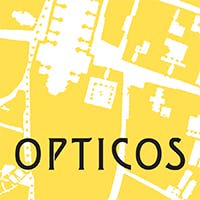Shape Oak Park
Oak Park has always been a leader—shaped by generations of residents who understood that great neighborhoods don't just happen, they're created through thoughtful, intentional choices. Today, Oak Park residents choose to live here because they want to thrive in a vibrant community that reflects their values of equity, inclusion, sustainability, and affordability. Our zoning code should support those same commitments.
Through Shape Oak Park, we are:
Inviting you to lead. Your input will actively guide our community's evolution through surveys, conversations, pop-up events, and workshops throughout the year.
Exploring more housing choices. Missing middle housing—duplexes, townhomes, and small-scale buildings that match our neighborhood character—can create opportunities for teachers, families, nurses, seniors, and everyone who wants to call Oak Park home.
Honoring our character. We're proposing gentle, incremental changes—thoughtful additions that preserve what makes Oak Park special while opening doors for young families, older adults, and everyone in between.
Shape Oak Park is about ensuring the next generation can write their own Oak Park story.
What is Zoning & Why Does it Matter?
Think of zoning as the rules that determine what can be built where in our community. These regulations decide whether a lot can have a business, public space or residence. If it is a residence, then the rules will determine whether it is a single-family home, a duplex or a small apartment building. They set requirements for parking, building height and lot coverage. While zoning might sound technical, it directly shapes who can afford to live in Oak Park, what housing choices are available and how our neighborhoods evolve.
Zoning codes don’t always align with their community's current needs, wants or values. That's where this strategic update to key zoning standards comes in—we're refining these rules to create more housing opportunities while preserving Oak Park's cherished character, walkability and scale.
What is Missing Middle Housing?
Missing Middle Housing is a range of buildings with multiple units compatible in scale and form with detached single-family homes and located in existing neighborhoods. These buildings support walkability, locally-serving retail and public transportation options. They provide solutions along a spectrum of affordability to address the mismatch between the available housing stock and shifting demographics combined with the growing demand for walkability.
 Image Caption
Image Caption
Questions
Have a question? Submit it here, and a member of the Shape Oak Park project team will get back to you promptly. Please sign in to add your question.








Thank you for your contribution!
Help us reach out to more people in the community
Share this with family and friends